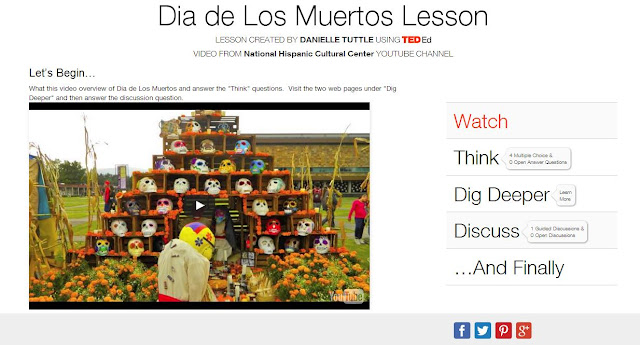 Listening is a key skill required for foreign language learning, and often students aren't exposed to it (or variations of it) enough. My suggestion today is: Podcasts. I think they are a great way to UP the level of Spanish being heard by your students and to help take away the "fear" so often associated with these types of listening activities. Actually, a creative teacher can turn these listening activities with Podcasts into something fun! WebSpanish at Podomatic.com has a ton of short 2-3 minute audio podcasts from beginner to upper intermediate which you can easily find time for in your classroom.
Listening is a key skill required for foreign language learning, and often students aren't exposed to it (or variations of it) enough. My suggestion today is: Podcasts. I think they are a great way to UP the level of Spanish being heard by your students and to help take away the "fear" so often associated with these types of listening activities. Actually, a creative teacher can turn these listening activities with Podcasts into something fun! WebSpanish at Podomatic.com has a ton of short 2-3 minute audio podcasts from beginner to upper intermediate which you can easily find time for in your classroom.“¿Qué vas a hacer este fin de semana?” is a 2 minute Podcast at the "Upper Basic" level for students to hear a quick conversation between two people about their weekend plans. One fun way to use this specific audio in your classroom would be as an "Exit Slip." Students all listen to the Podcast together in class and need to either answer a question about the weekend plans discussed (like what movie are they going to go see?) or write down their own response about one of the plans mentioned in the audio. Students could be required to answer in the appropriate verb form (ellos van a ....), and this would allow the teacher to see if the grammar learning objective has been met. Additionally, this would help students better their interpretive communication as they listen, interpret, and and analyze what is heard.
Other ideas for Podcasts in the language classroom:
- Use it as part of your "Flipped Classroom" and have students listen to or watch video podcasts for homework introducing new grammar, vocabulary, or cultural concepts
- Have students make their own podcasts and listen to their classmates
- Create learning stations around the classroom with different podcasts to listen to









